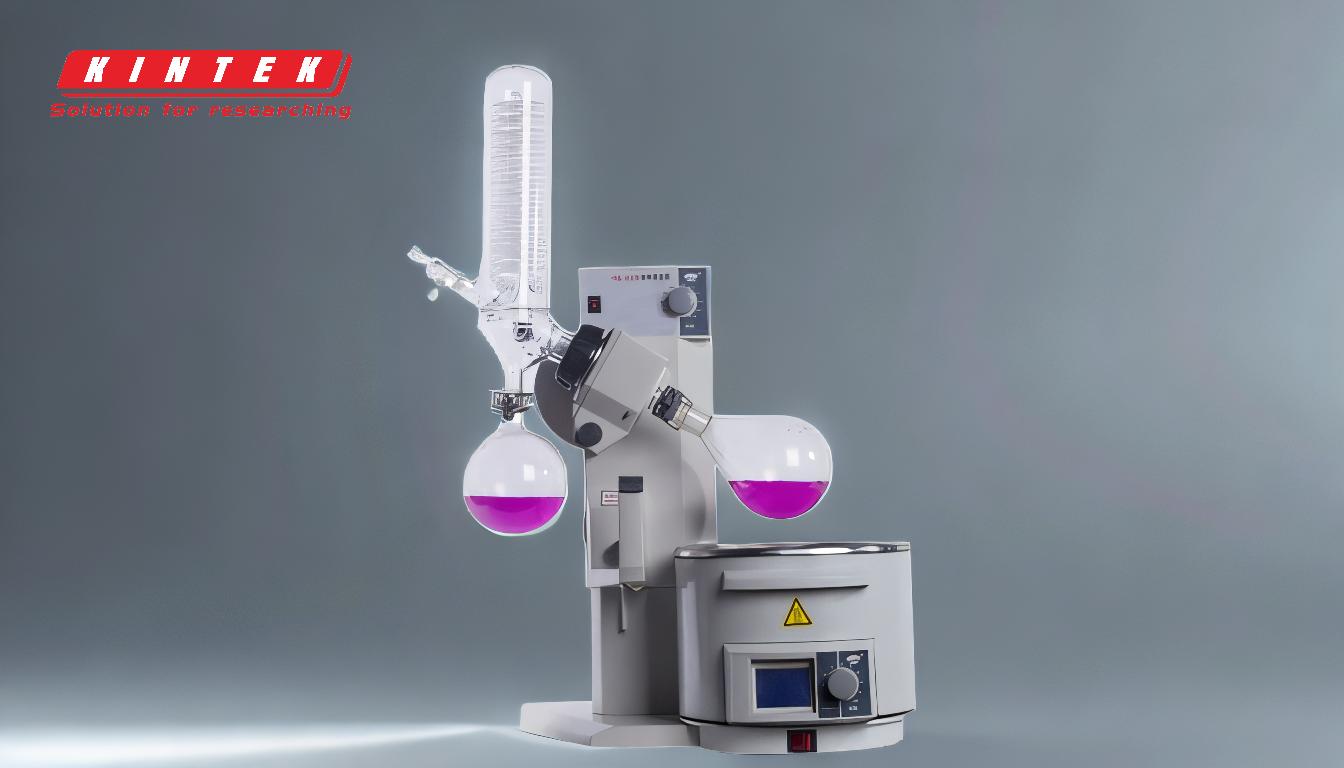Using a vacuum in a rotary evaporator (rotovap) significantly aids in solvent removal by reducing the pressure inside the system. This reduction in pressure lowers the boiling point of the solvent, enabling it to evaporate at much lower temperatures than it would under normal atmospheric pressure. This process is particularly beneficial for heat-sensitive materials, as it minimizes the risk of thermal degradation. The vacuum also ensures a controlled and efficient evaporation process, preventing volatile vapors from escaping and reducing the risk of bumping. Overall, the use of vacuum in a rotovap enhances the safety, precision, and effectiveness of solvent removal.
Key Points Explained:

-
Reduction of Pressure and Lowering of Boiling Points:
- A vacuum system in a rotovap reduces the internal pressure, which directly lowers the boiling points of the solvents.
- This means that solvents can evaporate at much lower temperatures than they would under normal atmospheric pressure.
- For example, a solvent that boils at 100°C at atmospheric pressure might boil at 40°C under reduced pressure, making it easier to remove without applying excessive heat.
-
Protection of Heat-Sensitive Materials:
- Lowering the boiling point of the solvent allows for distillation to occur at reduced temperatures, which is crucial for heat-sensitive materials.
- This prevents thermal degradation or alteration of sensitive compounds, preserving their integrity and functionality.
- This is particularly important in fields like pharmaceuticals, where the active ingredients can be easily damaged by high temperatures.
-
Controlled and Gentle Distillation Process:
- The vacuum ensures a gentle and controlled evaporation process, which is essential for maintaining the quality of the sample.
- By controlling the pressure, the operator can precisely adjust the evaporation rate, ensuring that the process is neither too fast nor too slow.
- This controlled environment reduces the risk of bumping (sudden, uncontrolled boiling), which can lead to sample loss or contamination.
-
Improved Solvent-Product Separation:
- The use of vacuum enhances the separation of the solvent from the product, making the distillation process more efficient.
- This is particularly important when dealing with complex mixtures where the solvent and product have similar boiling points under normal conditions.
- The reduced pressure allows for a clearer separation, ensuring that the final product is as pure as possible.
-
Safety and Environmental Considerations:
- The vacuum system helps in containing volatile vapors within the system, preventing them from escaping into the laboratory environment.
- This containment reduces the risk of exposure to hazardous chemicals and minimizes the potential for environmental contamination.
- Additionally, the reduced need for high temperatures decreases the risk of fire or explosion, making the process safer for laboratory personnel.
-
Energy Efficiency:
- By lowering the boiling point of the solvent, the vacuum reduces the amount of heat required for evaporation.
- This makes the process more energy-efficient, as less energy is needed to achieve the same result compared to distillation at atmospheric pressure.
- This efficiency is not only cost-effective but also aligns with sustainable laboratory practices.
-
Versatility in Application:
- The ability to adjust the pressure allows the rotovap to be used with a wide range of solvents and samples.
- This versatility makes the rotovap a valuable tool in various fields, including chemistry, biology, and food science, where different solvents and compounds may require different conditions for effective distillation.
In summary, the use of a vacuum in a rotary evaporator is essential for efficient, safe, and controlled solvent removal. By reducing the pressure and consequently the boiling point of the solvent, the vacuum allows for gentle distillation of heat-sensitive materials, improves solvent-product separation, and enhances overall safety and energy efficiency in the laboratory.
Summary Table:
| Key Benefit | Description |
|---|---|
| Lower Boiling Points | Reduces pressure, enabling solvents to evaporate at lower temperatures. |
| Protects Heat-Sensitive Materials | Prevents thermal degradation by operating at reduced temperatures. |
| Controlled Distillation | Ensures gentle and precise evaporation, reducing risks like bumping. |
| Improved Solvent Separation | Enhances separation efficiency, especially for complex mixtures. |
| Safety & Environmental Benefits | Contains volatile vapors and reduces fire risks, ensuring a safer lab environment. |
| Energy Efficiency | Requires less heat, making the process cost-effective and sustainable. |
| Versatility | Adaptable to a wide range of solvents and applications across multiple fields. |
Optimize your solvent removal process with a rotary evaporator—contact our experts today!










